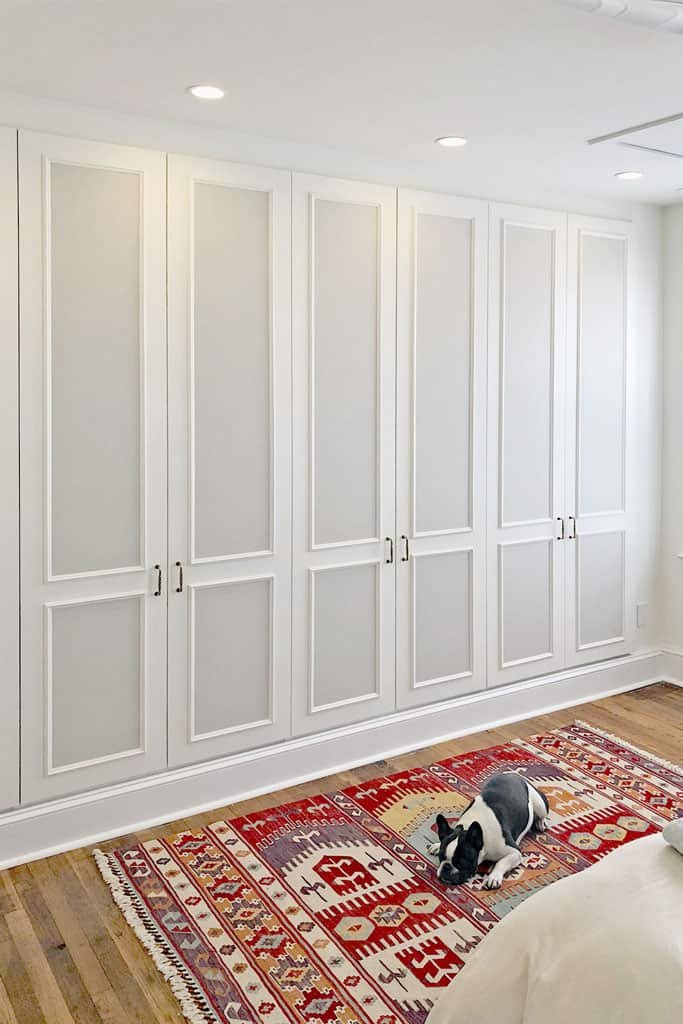
When you think about closet doors, you might picture just the door itself, but there’s much more to consider. The type of hardware you choose not only affects the door’s functionality but also its aesthetic appeal. Whether you want sliding doors, bi-fold, or traditional hinged doors, the hardware is what makes your vision come to life. Let’s dive into how to pick the right hardware for those custom built-in closet doors.
Understanding Your Door Style
Before you can choose hardware, you need to decide on the style of your closet doors. Each type calls for different hardware setups. The most common styles include:
- Sliding Doors: Perfect for tight spaces, sliding doors glide along a track and save room.
- Bi-Fold Doors: These fold in on themselves and are great for wide openings.
- Hinged Doors: Classic and reliable, hinged doors swing open and are easy to install.
Think about the space where your closet is located. If you have a small bedroom, sliding doors might be the best choice, as they don’t take up extra space when opened. On the other hand, if you have a larger area, bi-fold doors can give you a wider access to your clothing while adding a stylish touch. Choosing the door style first helps narrow down your hardware options.
Types of Hardware You’ll Need
Now that you’ve settled on a door style, it’s time to look at the specific types of hardware you’ll need. Here’s a general breakdown:
- Tracks: Essential for sliding doors, these guide the doors and keep them on track.
- Hinges: For hinged doors, select sturdy hinges that support the door’s weight.
- Pull Handles: Choose handles that are comfortable to grip and match your decor.
- Locks: If privacy is a concern, consider adding locks to hinged doors.
Each piece of hardware plays an important role in ensuring your doors function well. For sliding doors, smooth tracks are fundamental. If they’re poorly aligned, you’ll find yourself fighting with your closet every time you need something. For hinged doors, the quality of hinges can determine how well your door swings open and closed.
Material Matters
Materials can dramatically affect both the appearance and functionality of your closet doors. Common materials include:
- Wood: Offers warmth and is highly customizable, but can be heavy.
- Metal: Sleek and modern, metal is durable but might not suit every style.
- Composite: A budget-friendly option that mimics the look of wood without the weight.
When choosing hardware, match the material of the hardware with the door material. For instance, if you’re going with wooden doors, wooden or brass hardware can create a cohesive look. If you choose metal doors, opt for sleek metal hardware to maintain that modern vibe.
Weight and Size Considerations
Another important factor is the weight and size of your doors. Heavier doors require sturdier hardware. Here’s what to consider:
- Weight Ratings: Ensure that the tracks and hinges you choose can support the door’s weight.
- Size Compatibility: Check that your hardware is compatible with the dimensions of your doors.
If your door is large and heavy, you’ll want to invest in high-quality, durable hardware. Using insufficient hardware can lead to problems down the line, such as sagging or misalignment.
Style and Finish
Beyond functionality, the style and finish of your hardware can greatly impact your overall aesthetic. Here’s how to choose the right finish:
- Classic Chrome: Offers a timeless look that works well with many decor styles.
- Brushed Nickel: Provides a modern feel and is less prone to fingerprints.
- Oil-Rubbed Bronze: Adds a touch of elegance and works beautifully with darker woods.
Choosing the right finish helps tie the look of your closet doors into the rest of your space. If you have a modern decor style, chrome or brushed finishes might suit best. For a rustic or traditional look, oil-rubbed bronze could be the way to go.
Testing and Adjusting Hardware
Once you’ve selected your hardware, it’s time to install and test everything out. Here are a few tips to ensure everything works smoothly:
- Test the Range of Motion: After installation, open and close the doors several times.
- Check for Alignment: Make sure everything lines up correctly; misalignment can cause wear and tear.
- Adjust as Necessary: Most hardware has options for adjusting track height or hinge placements.
It’s essential to keep an eye on the performance of your closet doors after installation. If you notice any issues like sticking or strange noises, address them right away to prevent more significant problems in the future.
Final Thoughts
Choosing the right hardware for custom built-in closet doors might seem overwhelming, but breaking it down makes it manageable. Focus on your door style, the type of hardware you need, and the materials and finishes that best suit your space. Remember, the right hardware not only enhances functionality but also adds a personal touch to your home, making it feel uniquely yours.
The key takeaway? Think carefully about how each element interacts with one another—like a well-coordinated outfit. Once you find that perfect balance, you’ll end up with closet doors that not only look great but also work effortlessly for your needs. Happy decorating!
